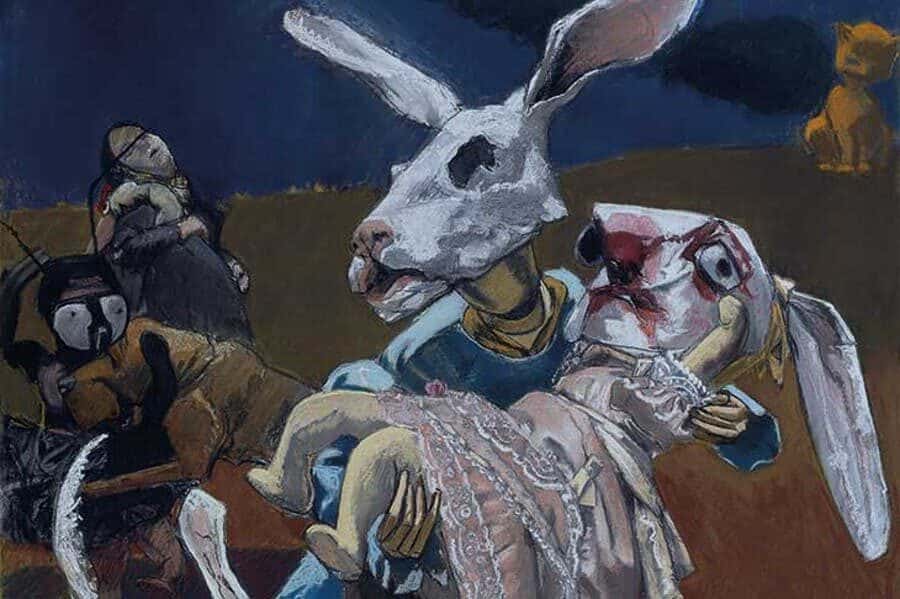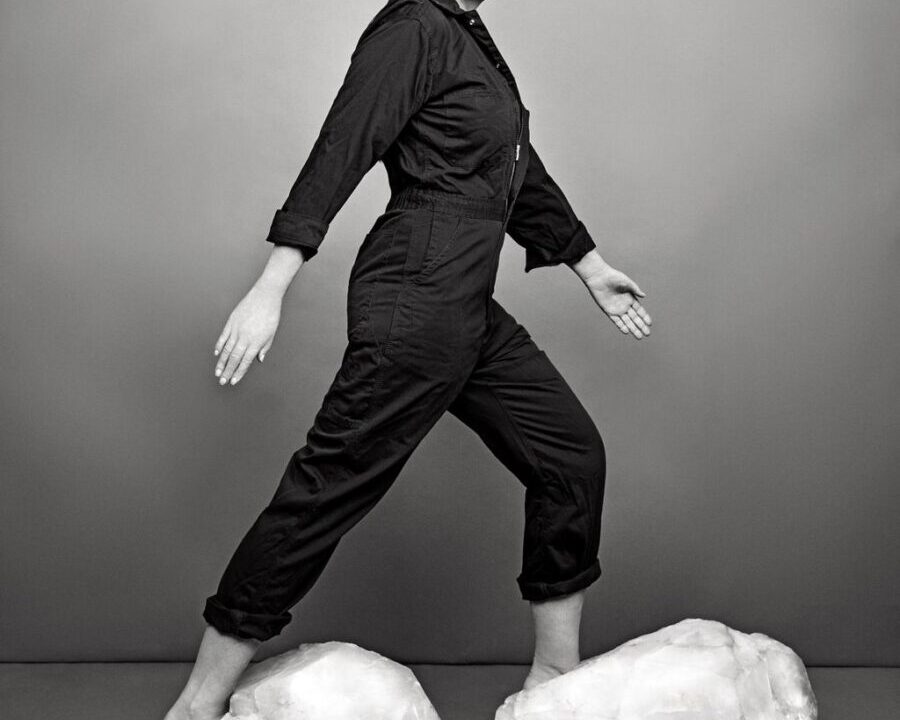The Value of the Works of Paula Rego
A “painter of stories” celebrated for her often dark, complex paintings, prints, drawings, and collages, Paula Rego draws upon folk tales from her native Portugal, literature, and her own biography to create politically charged and, at times, deeply unsettling works. Rego’s work explores the dynamics of brutality and power in the context of interpersonal relationships, political systems, and social structures. An ardent supporter of women’s rights, Rego has used her art to make powerful and timely statements. She depicts dysfunctional family relationships and political systems, and her work has often been associated with feminism. Rego is fascinated by what she calls “the beautiful grotesque” in life and art.
The Life of Paula Rego
Rego was born on January 26, 1935, in Lisbon, Portugal. Her father was an electrical engineer, and the family was divided in 1936 when her father accepted work in the United Kingdom; Rego was left in Portugal in the care of her grandmother until 1939. Rego’s grandmother was to become a significant figure in her life, as she learned from her grandmother many of the traditional folktales that would one day make their way into her artwork.
Rego was sent to Saint Julian’s School in Carcavelos, an English-language school which she attended from 1945 to 1951. St Julian’s was Anglican, and this, combined with the hostility of Rego’s anti-fascist father toward the Catholic Church, created a distance between Rego and Catholicism in an otherwise devoutly Catholic country. Rego has described herself as having become a “sort of Catholic,” and has said that as a child, she possessed a sense of Catholic guilt and a very strong belief that the Devil was real.
Rego attended The Slade School of Fine Art from 1952 to 1956. At the Slade, Rego met her future husband, Victor Willing, who was also a student. In 1957, Rego and Willing left London to live in Ericeira, Portugal. They were able to marry in 1959, following Willing’s divorce from his first wife, and three years later, Rego’s father bought the couple a house in London, at Albert Street in Camden Town.
Rego launched her artistic career in 1962 when she began exhibiting with The London Group, of which David Hockney and Frank Auerbach were members. Her early work verged on abstraction and was heavily influenced by the Surrealists, which was, in part, a reaction to her conservative training.
In 1966, Rego’s father died, and the family electrical business was taken over by Rego’s husband. The company failed in 1974 during the Portuguese revolution that overthrew the country’s right-wing Estado Novo dictatorship. As a result, Rego, Willing, and their children moved permanently to London and spent most of their time there until Willing’s death in 1988.
In 1990, Rego was invited to become the first Associate Artist at London’s National Gallery.
In 2009, a museum dedicated to her work, the Casa das Histórias Paula Rego, was opened in Cascais, Portugal. The following year, Rego was named a Dame of the British Empire. The artist currently lives and works in London.
Famous Works
Rego’s well-known depictions of folktales and images of young girls, made largely since 1990, bring together methods of painting and printmaking that emphasize strong, clearly drawn forms, in contrast to the looser style of her earlier paintings.
In her earliest works, such as Always at Your Excellency’s Service, painted in 1961, Rego was strongly influenced by Surrealism, particularly the work of Joan Miró. The method employed to create these works was based on the Surrealist idea of automatic drawing, in which the artist attempts to disengage the conscious mind in order to allow the unconscious mind to direct the making of an image. But as exemplified by Salazar Vomiting the Homeland, painted in 1960 when Portugal’s right-wing dictator Salazar was in power, even when her work veered toward abstraction, a strong narrative element remained.
A notable change in Rego’s style emerged in 1990, following her appointment as the first Associate Artist of the National Gallery in London. During this period, her stylistic technique shifted towards a much clearer, tighter, linear style reminiscent of the highly-wrought drawing technique she learned at the Slade. Some of Rego’s works from this period, such as Crivelli’s Garden, are linked to the paintings by Carlo Crivelli in the National Gallery, while other works, such as Joseph’s Dream and The Fitting, draw from works by Old Masters such as Diego Velázquez.
Rego began using pastels as a medium in the early 1990s and continues to use pastels to this day, almost to the exclusion of oil paint. Among the most notable pastel works are those in the Dog Women series, in which women are depicted in animal-like poses that capture a rich spectrum of ambiguities. In this much-celebrated series, Rego uses an urgent and emotive technique to create powerful, primal female figures which convey a defiant embrace of physical power.
Her work resides in numerous public collections, including the British Museum, National Gallery, National Portrait Gallery, and Tate Gallery in London; the Metropolitan Museum of Art and Museum of Modern Art in New York; and the Berardo Collection Museum in Lisbon.
Recent Exhibitions of Paula Rego
2015
The Last King of Portugal
SOPHIE SCHEIDECKER GALLERY, PARIS FRANCE
2017
Paula Rego: Works on Paper
MARLBOROUGH FINE ART, LONDON UNITED KINGDOM
2017
Paul Rego: Family Sayings
LA VIRREINA CENTRE DE LA IMATGE, BARCELONA SPAIN
2019
Paula Rego: The Cry of Imagination
CASA DE SERRALVES, OPORTO, PORTUGAL
Value at Auction
Jenufa is a powerfully expressive example from Paula Rego’s Dog Women series, an important group of paintings invested with intense emotional and creative energy. The subject of Jenufa exerts visceral strength; despite her seemingly animalistic pose, the figure exerts a sense of commanding authority over her surroundings. Jenufa was estimated by Sotheby’s Auction House at £400,000-600,000 and sold for £482,500 in 2014.
Executed in 1997, Rego’s Looking Out is an example of the artist’s Father Amaro series, which subtly explores the grand themes of lust, faith, and femininity. Its value at auction was estimated to be £500,000-700,000, and it sold for £965,000 in July 2015.
The Cadet and his Sister is a deeply human and poignant painting depicting the painful subject of a sad farewell. Executed in 1988, the male figure depicted is based on Ron Mueck, Rego’s son-in-law, and is invested with intense personal sentiment. Its value at auction was estimated to be £600,000-800,000 GBP, and it sold for £1,145,000 in 2015.
Add the Works of Paula Rego to Your Own Collection
Keep an eye out for live auctions in Dania Beach for the chance to add a work from this American artist to your collection. There are opportunities to participate in auctions via phone or online from anywhere in the world.
Selling the Works of Paula Rego
Do you have works by Paula Rego that you are interested in selling, appraising or cosigning? Call Joshua Kodner today, and ensure you receive the true value of your property.





